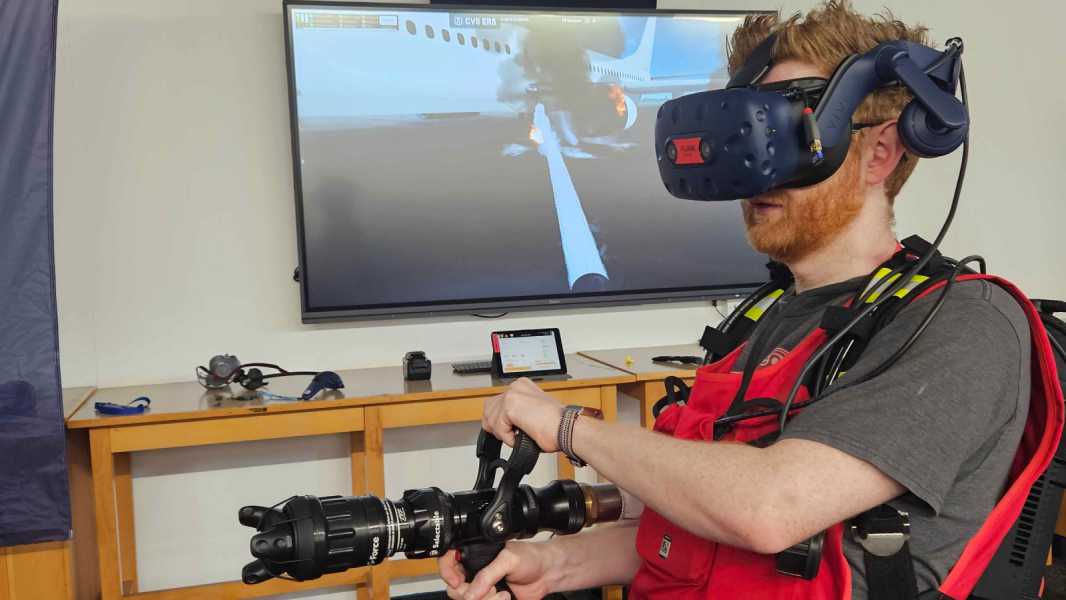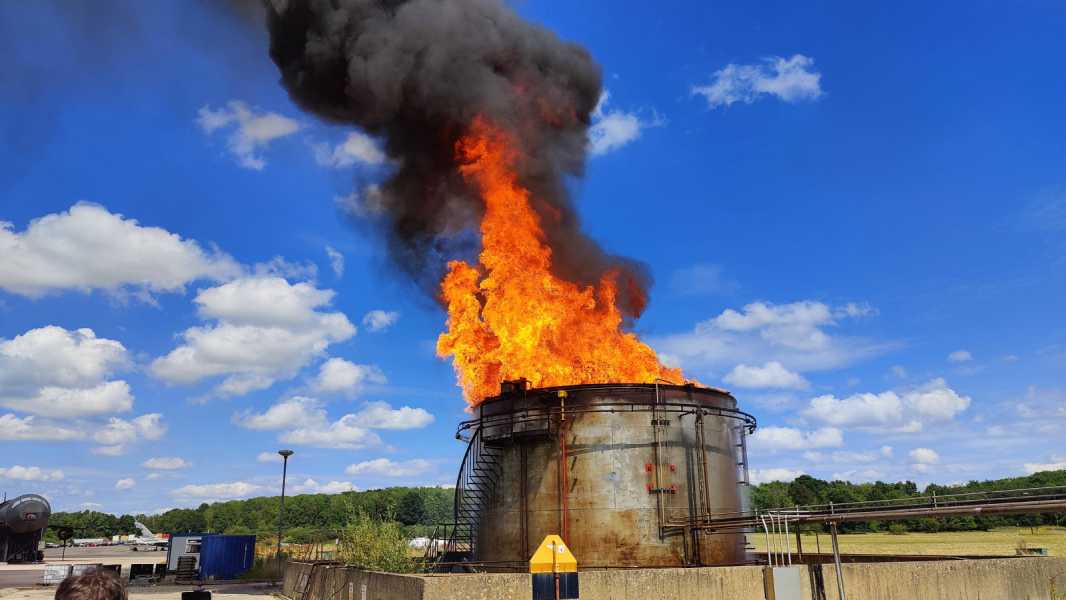
There is no illusion that VR training will completely replace real training. However, it can help future firefighters learn the procedures they will need to use in real-life situations. (Image credit: Ian Stokes FLAIM)
At first glance, I may look like I just entered a Ghostbusters costume contest, but what you're actually watching is cutting-edge virtual reality (VR) technology for firefighter training.
Virtual reality technology has been around for quite some time now, but it still remains a fairly specialized field, mostly occupied by gamers who use the best VR headsets for an immersive gaming experience.
However, there are plenty of exciting applications for the technology that are starting to make their way into the professional world. HTC, one of the leading names in VR, invited Live Science to the picturesque English town of Moreton-in-Marsh – home to a fire college – to demonstrate how VR is training our next generation of firefighters.
Before we saw any of the training programmes, Paul Speight, an emergency management instructor at the college, took us on a tour of the college’s world-class training ground. We saw the various buildings they use to practise fire rescue scenarios, including the shortest motorway in the UK and a mock offshore oil rig, which Speight happily set on fire to amaze us.

I’d been close to big, roaring fires before—in the UK, we have annual bonfires on Guy Fawkes Night (November 5)—but I wasn’t prepared for the heat that came from those flames. The rig’s artificial fire used gas instead of oil to reduce pollution, and Speight reported that the temperature easily reached several thousand degrees Celsius (for reference, natural gas burns at 3,560 degrees Fahrenheit, or 1,960 degrees Celsius), which was very hot even from the 40 feet (12 meters) we started from, and about as hot as I could stand once we climbed onto the rig itself.
This raised an interesting problem with “virtual firefighting” — you can animate a fire in a virtual space and put a fake hose in someone’s hand, but how do you reproduce the physical sensations? Heat? Smoke? Stress? I soon got the answer, but only after some virtual investigation.
RiVR Investigate
The first of the two training programs we tested was called RiVR Investigate. I donned a VR headset — an HTC Vive Pro 2 — and was transported into the burnt-out remains of a small suburban kitchen.
The first thing that struck me was how realistic the environment was. Usually, VR games avoid photorealistic graphics because of the load
Sourse: www.livescience.com





